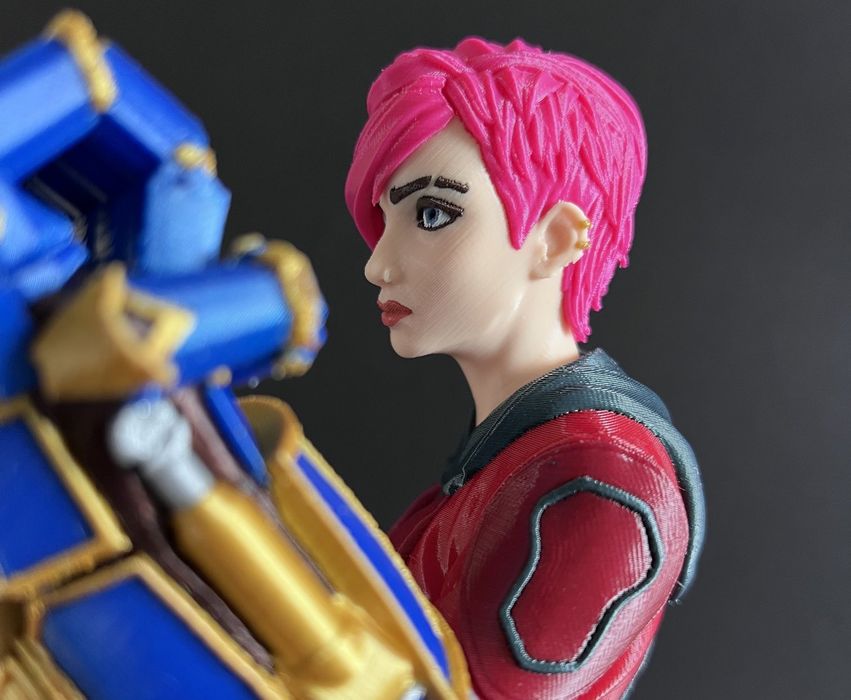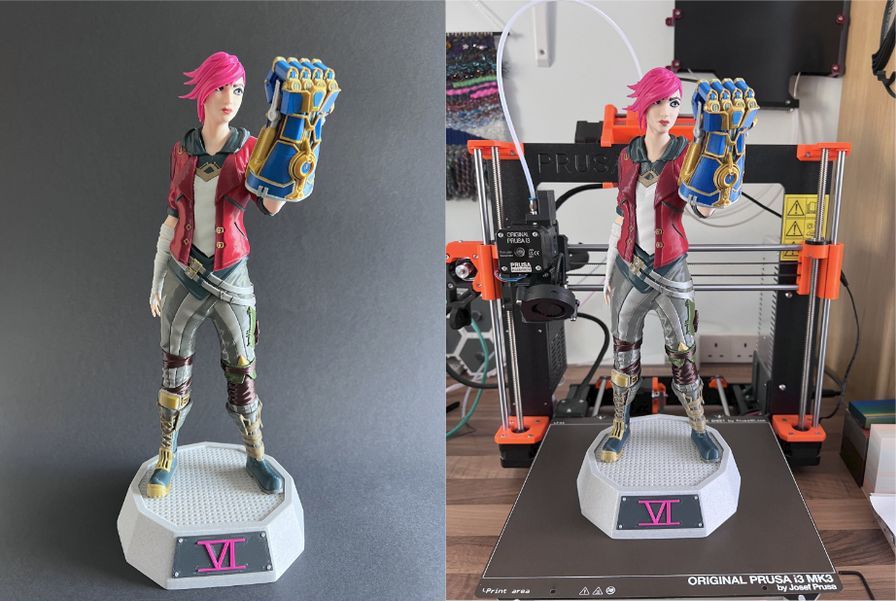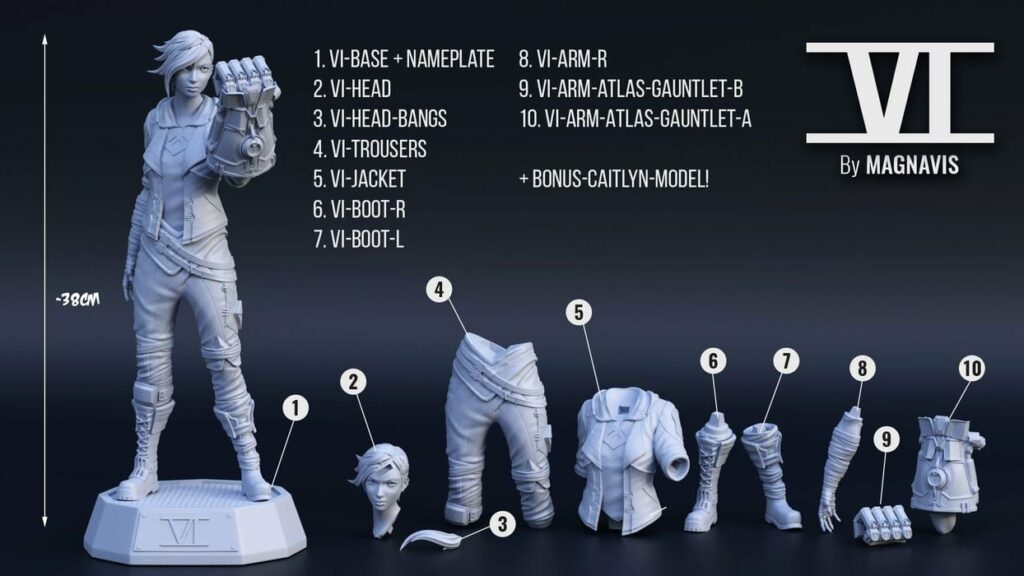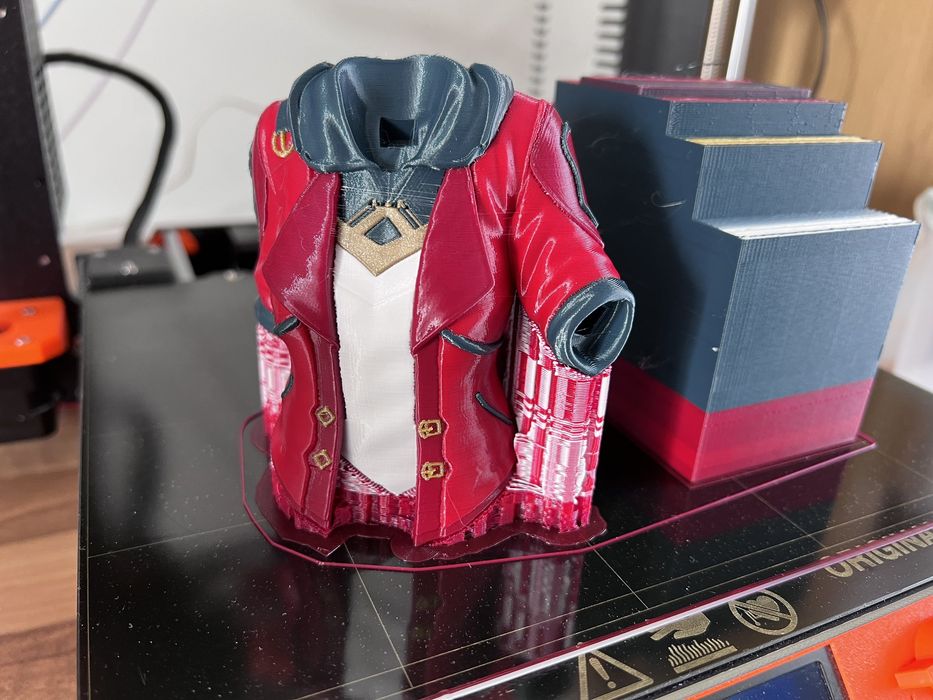
This week’s selection is the detailed 3D model of Vi from Arcane by Magnavis and 3D printed by Barry Webb.
Magnavis, a digital artist based in Brighton, UK, designs props and characters from films, TV shows and games, and this item is one of their most interesting efforts.
“Vi” is one of the two main characters in the Netflix series “Arcane”. The other main character is Jinx, which Magnavis has also modeled.

What led us to the Vi model was an astonishing print of said model by Barry Webb, who posted his results on Twitter recently.

The 3D model is actually broken into 13 different pieces that must be printed separately, and then assembled. Magnavis explained:
“She has been split for ease of print and paint, and has been keyed in such a way that the joints are almost entirely hidden when pieced together, giving you an almost seamless model once assembled.”
That’s a most excellent way of splitting a large model, as I’ve encountered many that end up with unsightly seams at the joints. You can overcome them with sanding and painting, but it’s so much better if the cuts are designed to be hidden by default.
Magnavis intended the design to be produced on resin 3D printers, which offer much higher resolution and print quality than FFF devices. The model has been specifically designed and tested for that platform.
However, 3D printer operator Barry Webb decided otherwise and attempted to produce the detailed figurine on a FFF 3D printer: the Prusa MK3S MMU2S multimaterial 3D printer.
While the 3D model by Magnavis is incredible, so is the print job done by Webb.
Webb used PrusaSlicer’s painting feature to map colors to all of the Vi surfaces, and then printed each part on the MMU2S.

Here you can see some of the Vi sections underway on the MMU2S, which is able to handle up to five different colors per job. By expertly selecting a color scheme, Webb was able to produce the final completely assembled model with quite a variety of colors. However, each individual piece used a maximum of five colors.
True to Maganvis’ explanation, the resulting print is incredible and appears to have no seams.
This turned out extremely well, especially considering it was made on a FFF device and not a resin machine.
Via Twitter, Printables and Ko-Fi
